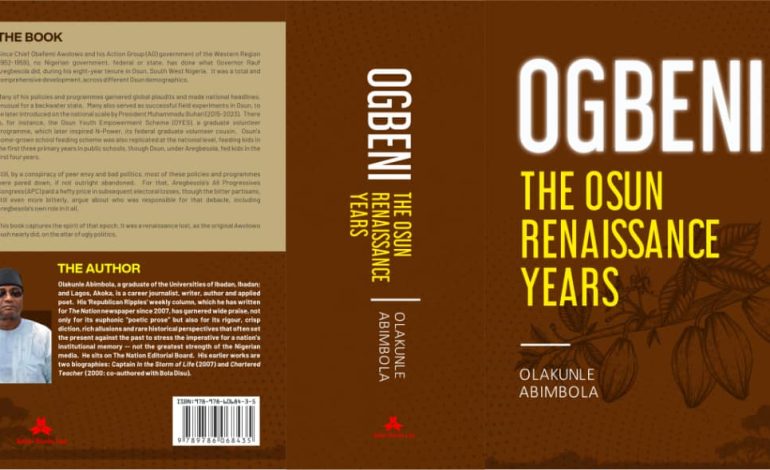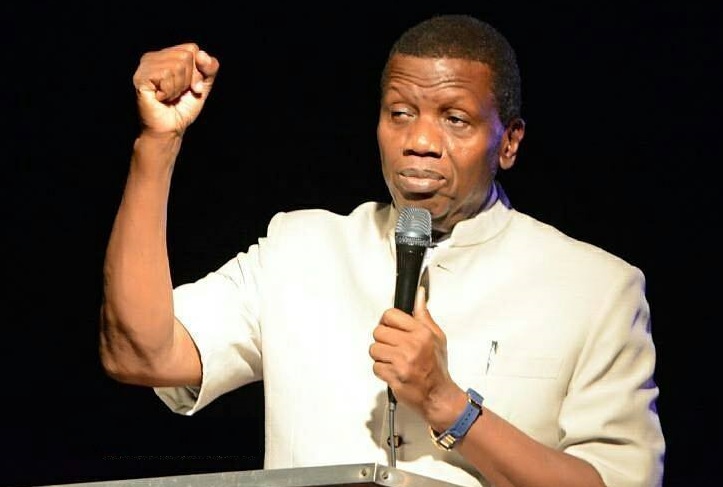REVIEW: Rebirth And Rebrand


- BY OLAKUNLE ABIMBOLA
Omoluabi crest: old wine, new skin
The only difference between the Osun new crest and the old Western Region Coat of Arms was the African lion that replaced Angus, the British burping cow. In Osun Government Unusual: A Documentation of Programmes, Projects and Impacts under Ogbeni Rauf Aregbesola, 2010 – 2018, the Aregbesola government further shed light on the philosophy behind the Osun rebranding.
“The state adopted the almost forgotten emblem of Western Region as its own crest. It equally developed an identity; a flag for the state. The crest, the flag and the anthem,” it further explained, “are an indication of a commitment to mobilize and motivate the people towards playing their role in society and improving their perception of themselves.”
The publication also gave a detailed breakdown of what it called the “Elements of re-branding, the State of Osun”:
• Adoption of “Omoluabi” ethos
• Changing the title “Osun State” to “State of Osun”
• Adopting “Land of Virtue” as against “State of the Living Spring”
• Design and introduction of unique emblem for the State. These include the state Logo/Osun Coat of Arms, which represent the identity of the State and is symbolic of everything it stands for:
• The two elephants symbolize strength, service and prosperity.
• The Cocoa Tree and the two crossed logs of wood where the elephants stand signify our dependence and respect for agriculture and the natural land resources.
• The Ori Olokun represents the common origin of Yoruba and our dexterity in technology. The garland surrounding the Ori Olokun symbolizes victory and triumph.
• The Earth Colour represents the fertility of our land and the shade of our skin.
• The INDIGO colour in the upper part of the shield symbolizes the common Adire fabric of Yorubaland.
• The RUBY RED colour of the lower part of the shield signifies nobility.
• The Lion symbolizes Yoruba nobility, dignity and royalty; while the CUSHION of FERNS represents the traditional liar of an African lion.
• The rivers Niger and Benue symbolize the connection between Osun and the rest of Nigeria.
READ: A REVIEW: O’ School And Opon Imo
• We are a rain forest people: timber represents the vegetation of our region.
• The two symbols of CHIEF’S SWORD and the MACE are embodiments of our spirit and our commitment to the ideals of Democratic Governance.
• The seven cowries are representative of our success in commerce and the number seven is symbolic of the seven sons of Olofin Oduduwa. Their military valour, diplomacy; dexterity and trade mastery created wealth and resulted in an expansive kingdom.
• State Flag: The Pan-African flag consists of the official colours of the African race. The colour red represents the blood bond among Africans. The colour black depicts the existence of the black race. The colour green denotes the abundance of wealth in the continent of Africa. The gold depicts the abundance of minerals in Africa. The earth colour represents the fertility and tone of our land.
The document also published the Osun Anthem, in Yoruba:
Ise wa fun ‘le wa
Fun ile ibi wa
Ka gbe e ga (x3)
F’ aye ri
Igbabo wa nipe
Ba ti b’ eru lab’ omo
Ka sise (x3)
Ka jo la
Isokan at’ ominira
Ni e je ka ma lepa
Tesiwaju f’ opo ire
At’ ohun to dara
Omo Odua dide
Bo sipo eto re
Iwo ni
Imole gbogbo adulawo
Equal religious access
Equal access to all faiths, in the eye of the state, was an integral part of the Osun re-branding project. Faith may be strictly personal. But giving equal official access to major religious practices was a re-jig of the Osun infrastructure of the mind. That policy linked what Prof. Ropo Sekoni called “citizens’ welfare politics” to politics of managing religious diversity, mutual respect among the varied adherents and general tolerance. Though Prof. Sekoni traced citizens’ welfare politics to 1952, when Chief Awolowo assumed duty as Leader of Government Business in the Western Region, applying that principle to faith matters was near-novel. It was one of those innovations that made the new Aregbesola government a “government unusual”, as the Governor had dubbed it. Nevertheless, that latent grain, of religious tolerance, had always been there, if dormant, among the Yoruba. Even in pristine Yoruba communities, a liberal attitude to the worship of different local gods, under the guidance of the Almighty Olodumare, was a proud and enduring credo. The contemporary Yoruba society also stands out, among other Nigerian ethnics, as the most tolerant of others’ faiths; which is why Christian-Muslim tension is minimal in the region, though there are no shortages of extremists of both faiths.
Still, it was something fresh – and rather surprising to the near-suppressed traditional faith believers, living under the shadows of the two foreign faiths of Christianity and Islam. All of a sudden, they now enjoyed equal access and recognition with the new Osun order! Why, however, would the new Governor, an ardent and rather expressive Muslim himself, start on such liberal slate that might even have alienated him from his hardcore fellow Muslims?
“First and foremost I’m a humanist. It is humanism or my adherence to humanist tendencies,” he declared, “that reinforces my Islamic commitment because I see in Islam the latitude for human rights, possession of human dignity, promotion of human values.”
Still, it was clear not all of his Muslim ummah, or other purists in the Christian divide for that matter, warmed up to the policy; not a few of them dismissing it as official idolatry, when the new government ought to have squarely faced its secular business.
“Those who are steeped in their own narrow perception of life can say whatever they want to say. It was even clear to those who were waging the campaign that they were mischievous. What they couldn’t say,” he wagered, “was that I wasn’t a serious Muslim.”
Beyond religious sentiments, Aregbesola further explained the thinking and philosophy behind that liberal religious policy of access to all.
“There is no being with the capacity to think that does not value himself. I believe no being with the capacity to think is totally against his own value and dignity. If that is the case,” he expatiated, “I cannot impose my views and own opinion. I must be able to recognize your capacity to choose what is best for you — from spiritualism, to material existence, to every other thing. That to me,” he declared, “is fundamental.”
It was novel to integrate prayers of the three major faiths – Christianity, Islam and Isese, the Yoruba Traditional Beliefs – into government official functions, after the rendition of the National Anthem, the National Pledge and the Osun Anthem. It was generally all so new and fresh. But for traditionalists especially, it was a rare morale booster, rubbing shoulders with those hitherto had the penchant to look down on them. But it did not end there. The new government also passed laws to declare a yearly public holiday for Isese, aside from declaring a state holiday for the Islamic New Year. These new holidays would spark some emotive storm, especially among Christian chauvinists and their confederates in the piqued segment of the media, who went on a binge of hurt emotions, rather than any clinical and convincing reason.
However, the equal access faith policy stood – and would appear quite popular among the Osun populace, though no specific study validated that claim. Nonetheless, that bold faith parity would provide fuel for mischievous, if not outright evil, forces to manipulate the naive and divert attention from the government’s core developmental policies. But more on those in later chapters.
The opinions expressed in this publication are those of the author. They do not represent the opinions or views of OSUN DEFENDER.










